- Call us: 01444 237070
- Contact Us
- Stores
- Sign In / Register
-
- Back
- Used Cameras
- Used Accessories
- Used Lenses
- Used Video
- Used Film Equipment
- Used Stock Alert
- Used Blank Test
- Sell or Part Exchange
- Used Clearance
- Recently Added Used Equipment
- Park Picks
- All Used Black Friday Deals
- Faulty
- Trade-In
- Blog
- New in
- Call us
- Contact us
- Stores
- Sign in
- Categories
- Tips & Inspiration
- Reviews
- News
- Events
- Features
- Buying Guides
- Competitions
Tips to help improve your Sports Photography
For many sports fans, capturing incredible, once in a lifetime shots and making a living from it would be a dream come true.
But everyone has to start from somewhere, so we sat down with photojournalist and Canon Ambassador Eddie Keogh who has captured sport at all different levels including Sunday league football, to European Cup finals, for some tips that you can put into your own sports photography.
Most people get their first taste of sports photography when they cover amateur sport. That could be the classic Sunday morning football match in your local park, the local tennis club tournament or a beautiful day of cricket on the village green.
I learnt my trade shooting my brothers football team playing every Sunday morning and after a few months got my first paid gig shooting for the Millwall FC programme. It was black and white film back then, all developed and printed at home in my bedroom. I’m lucky to say that I’ve had a wonderful career as a sports photographer and have photographed most sports you care to mention. I’ve covered every World Cup since Mexico in 1986 and I am currently the official photographer of the England football team via Getty Images. We’re gonna win the Euro’s next year in Germany, so remember you heard it here first!
The reason we all love photography is the joy and fulfilment we get when we take a picture we’re proud to show our friends and family. Believe it or not after 40 years I still get a buzz from getting a good picture, and thats what I’d like to talk about on this blog. How can we improve our chances of getting better pictures. As football is my thing, I’ll talk about shooting grassroots football but you can relate this to any sport.

- Shot using a Canon EOS R3 + Canon EF 400mm f/2.8L IS III USM | 1/2,000 f/3.2, ISO 2,000
Lets start with the basics. Fast movement requires a fast shutter speed so a minimum of 1/2000th. Even with poor floodlights and indoor sport you should be able to get away with that as the ISO quality is so good now at higher ISO’s. Use the AI Servo mode for follow focus while shooting bursts of action. I use expanded 1 point AF and use the toggle to move that around the frame. With mirrorless cameras now I only ever shoot manual exposure. You can see exactly what exposure you’re getting in the viewfinder and thats one of the things I love most about mirrorless.
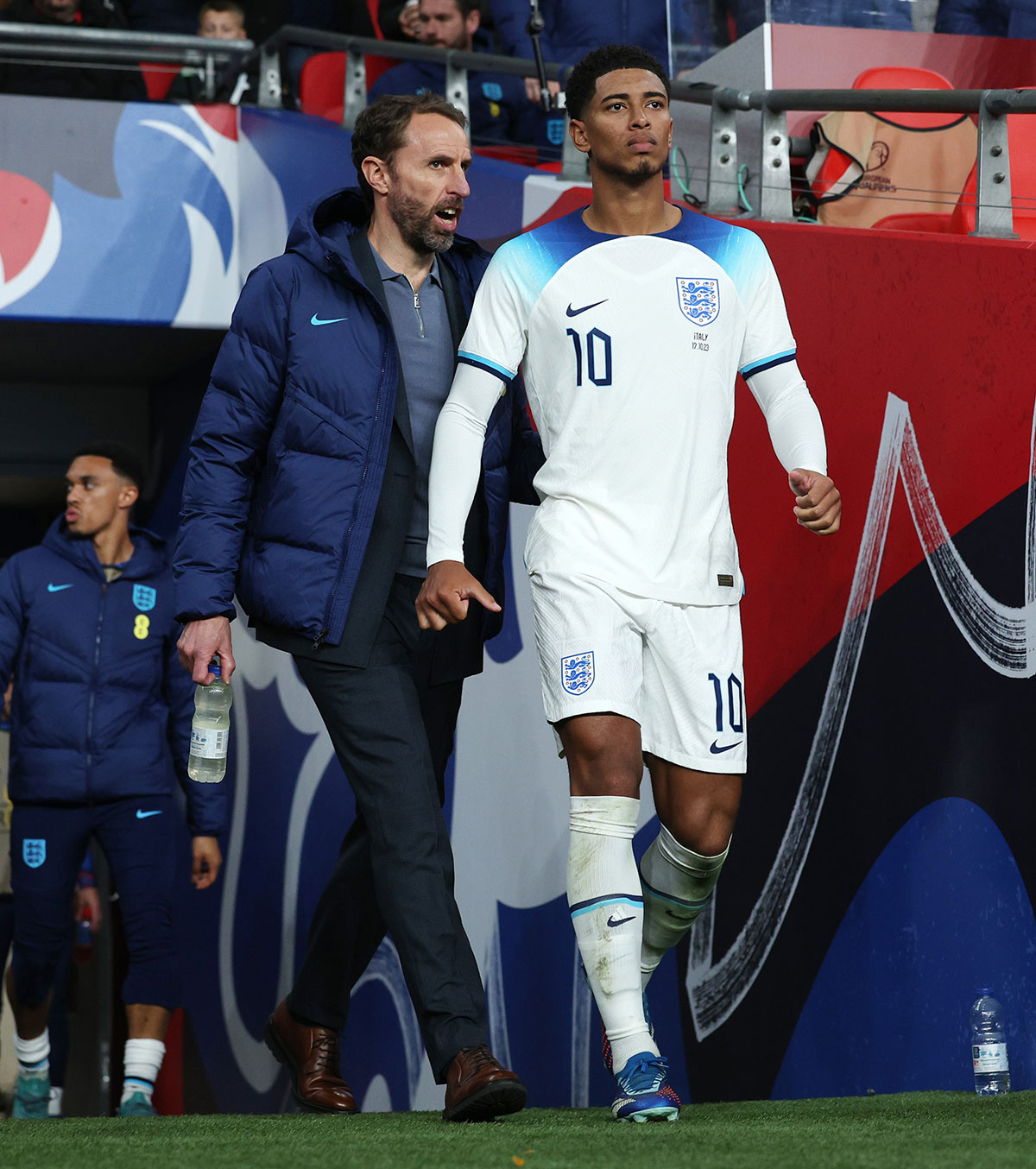
- Shot using a Canon EOS R3 +RF 70-200mm f/2.8 L IS USM | 1/800s, f/3.5, ISO 2,500
Keep low. Either sit low down on a small seat or sit on the ground if you’re able. A low angle on any sport gives a lovely dynamic angle, especially if you can see the athletes feet off the ground. Even easier is to place the camera on the ground and frame your picture using the vari-angle touchscreen LCD display. Here is a picture I took of Gareth Southgate and Jude Bellingham with the camera on the floor using the whole area focus and the focus followed them both as they walked out.
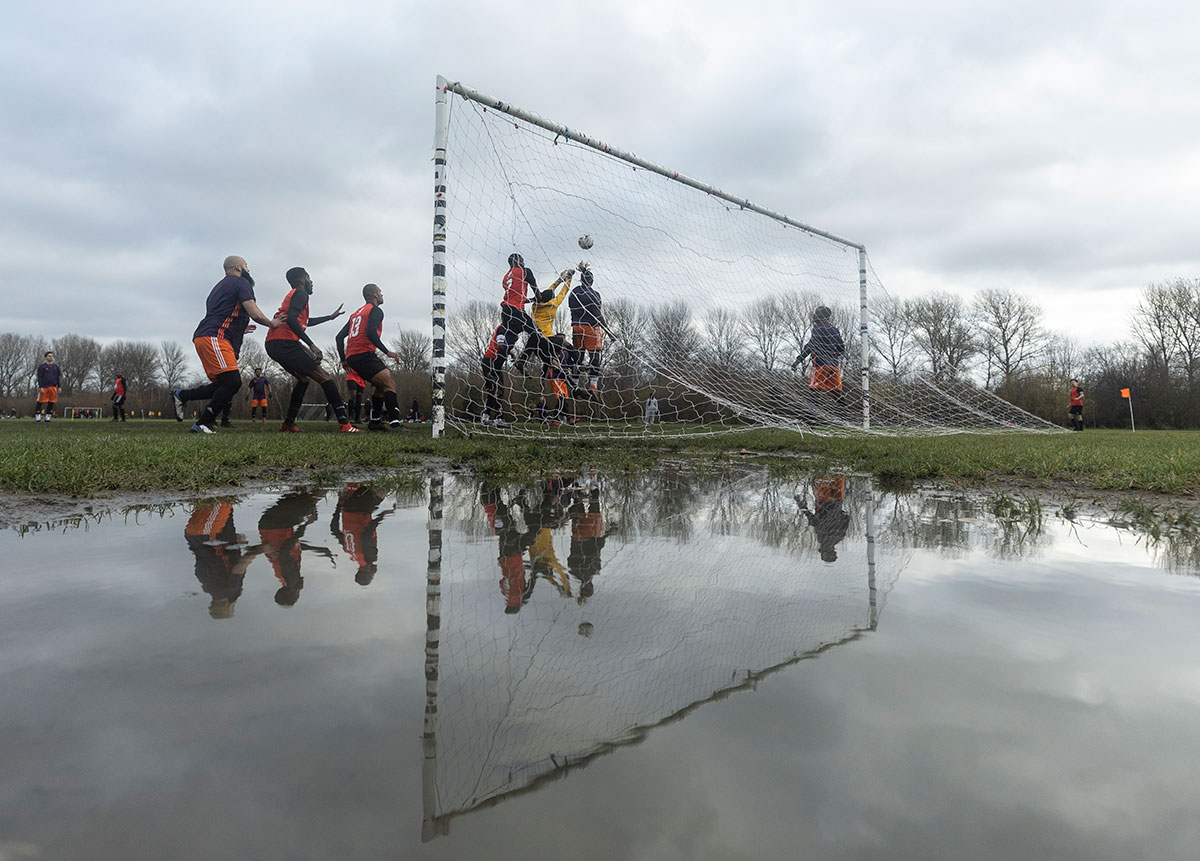
- Shot using a Canon EOS R3 + EF 16-35mm f/2.8L III USM | 1/1,250 f/4.5, ISO 500
Be prepared for all weathers. If you’re shooting grassroots sport then using an umbrella won’t get in anyones way. Obviously that won’t be allowed at elite sport as it will get in the way of paying spectators so you’ll need decent waterproofs. I use a couple of travel towels to cover my cameras in the rain but a proper waterproof cover is recommended when its really tipping down. If it’s very cold, then gloves can help. I have a pair for really cold nights that just allows my shooting finger to be out. Alternatively if it’s really hot, don’t forget your sunscreen and a hat!
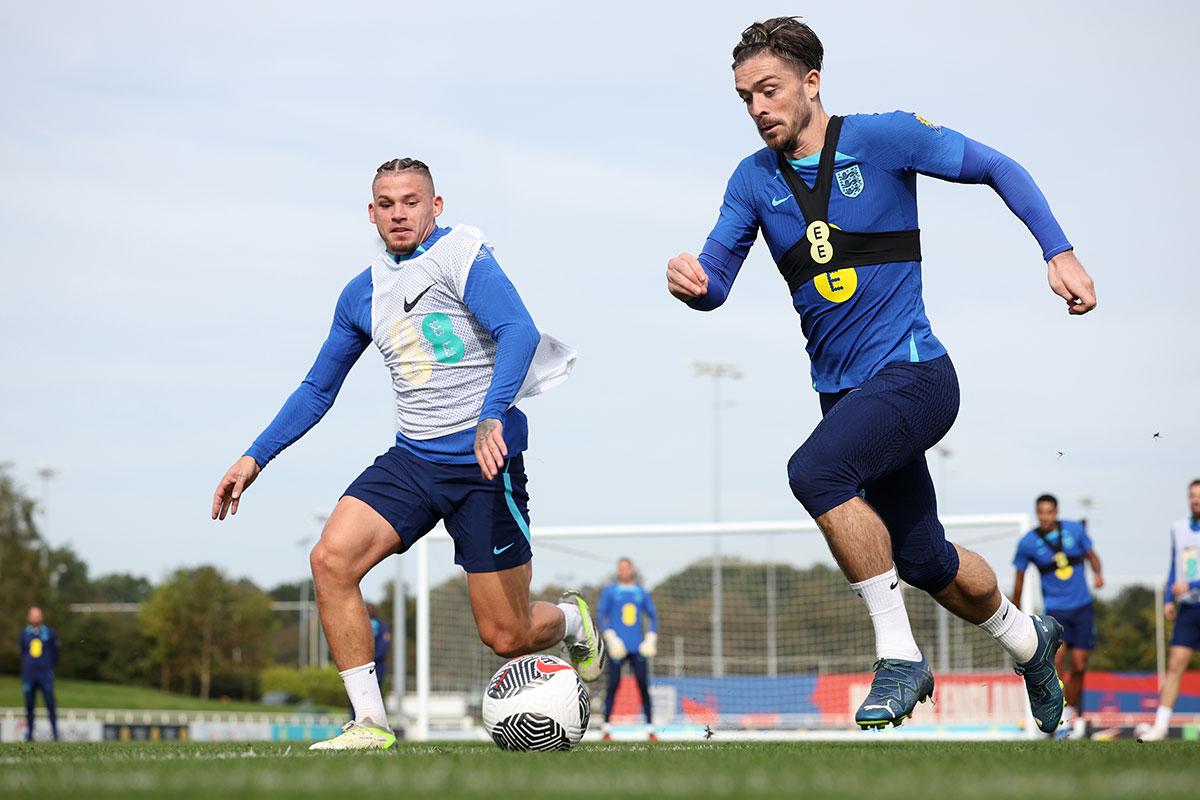
- Shot using a Canon EOS R3 +RF 70-200mm f/2.8L IS USM | 1/1,600s f/4.0, ISO 200
Where is the best light and the best background? A team in bright colours could work well with strong sunlight but if the background is messy and distracting then you may need to consider moving. If the team you need is in a light colour then maybe against the light kit against a dark background could work really well. The background is always an important consideration for photographers, the cleaner the better. And this is where long lenses come into their own as the longer the lens the more out of focus the background is. If you’ve splashed out on a f/2.8 lens then use it at f/2.8 to get that benefit as the wider the aperture the more the background drops out.

- Shot using a Canon EOS-1D X Mark II + EF 24-70mm f/2.8L II USM | 1/1,000s f/4.5, ISO 800
Look for something different. Think composition, how do the goalposts line up. Can you use the painted lines on the pitch to lead into a picture. Can you see pools of water nearby. Place your camera just about the water to shoot a reflection of the game. With urban football, how do we tell that story of football in a city. Whatever story it is you need to tell I would certainly recommend a recce before the game. Don’t be lazy, work the event. Move around, check all the angles, can you get a view from a nearby building if it needs a wider view?
Talk to people. Introduce yourself to managers/organisers and explain what you’re doing. Before you know it, they’re asking for your pictures and are you coming back next week. When you feel more comfortable in those situations, then it’s time to get closer. Maybe the manager giving his team talk before the game, get in the huddle before kick off, maybe even get in the dressing room after the game to show all the dirty kit and boots on the floor.
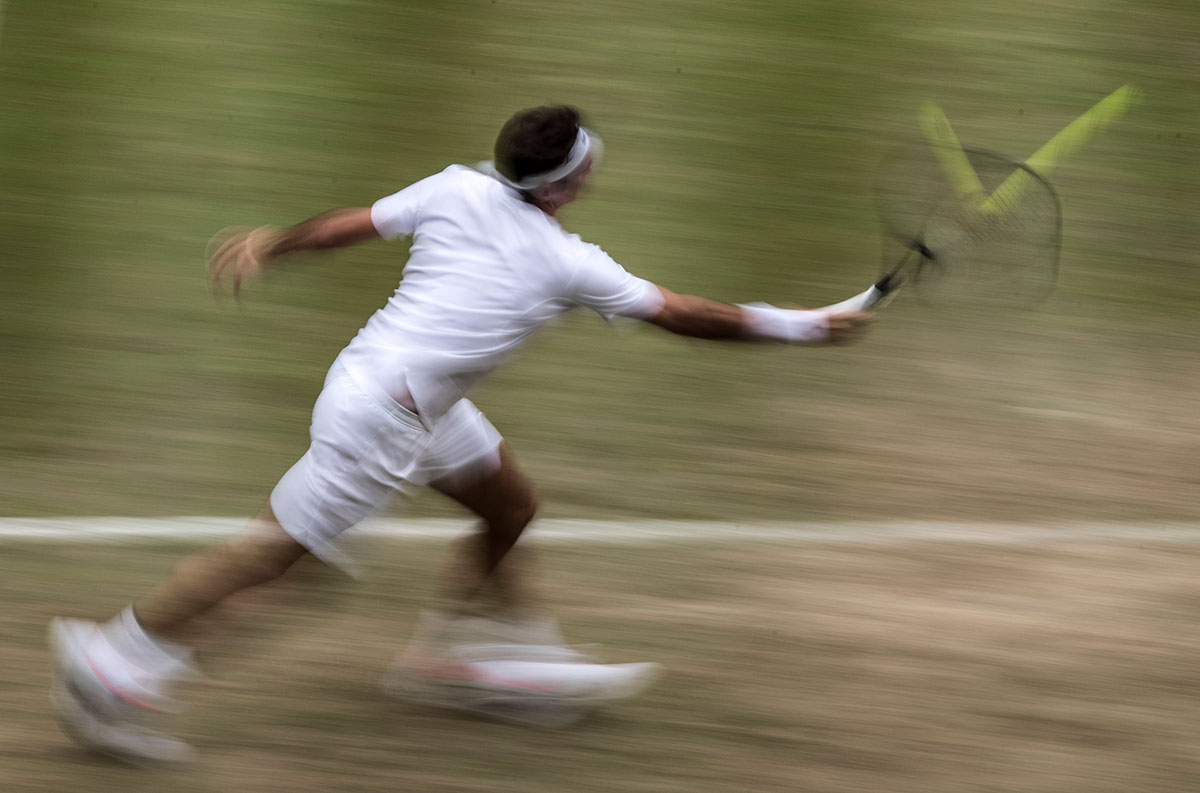
- Shot using a Canon EOS-1D X Mark II + EF 400mm Lens F/2.8L USM IS II | 1/13s f/14, ISO 200.
Panning is a great technique – I love the way it gives a sense of art and movement to the subject. If you have Image Stabilizer on your lens, that helps to get your subject sharp while giving those lovely streaky lines behind. The Canon EOS R3 has Panning Assist now which makes panning even easier. Try 1/30th of a second, but it is possible to shoot 1/15th if you can master a nice smooth panning technique. At such a low shutter speed the panning streaks will be longer, and it’s very difficult to get the whole of the subject sharp, but generally the picture only works if you have one small part of the subject totally sharp.
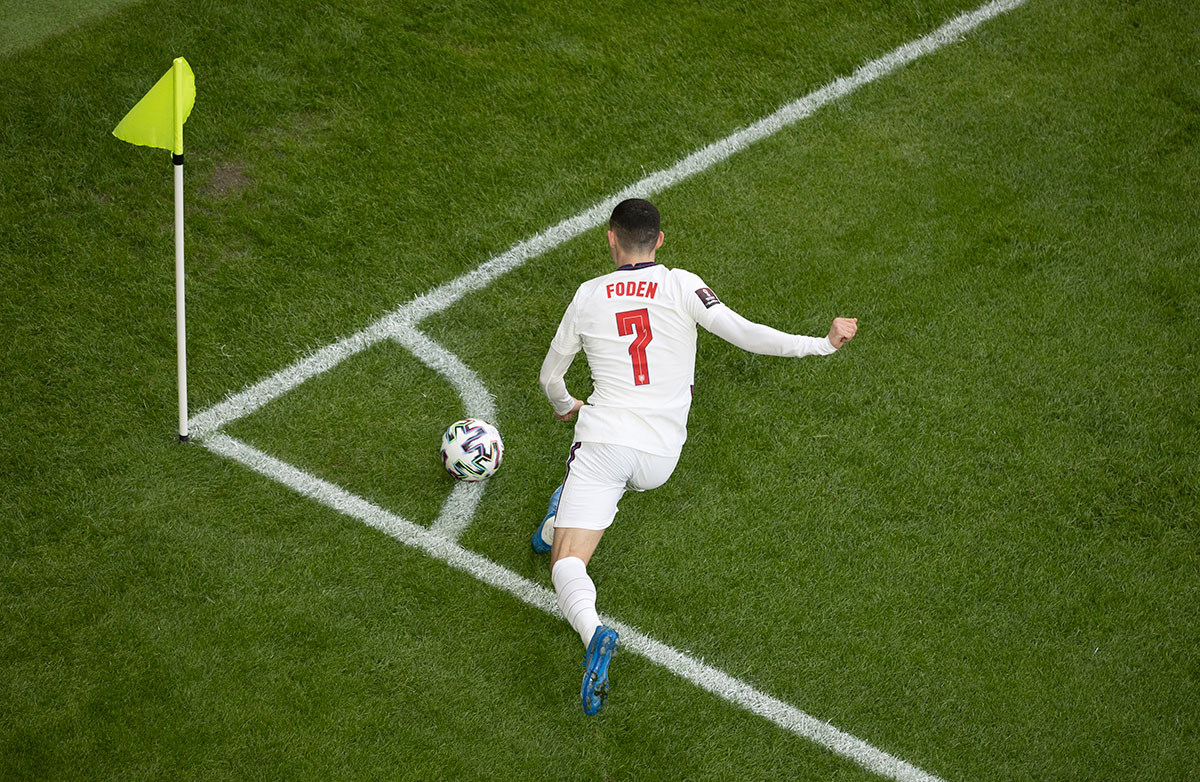
- Shot using a Canon EOS-1D X Mark III + EF 70-200mm f/2.8L IS III USM | 1/2,000s f/2.8, ISO 1,000.
Long lenses will help. Yes it really is possible to get some great shots on a shorter lens around the goalmouth, but if sport is going to be your thing then you need to be looking at the long game. A 70-200mm is a good start but to really get into the action and have those beautiful action shots with the background out of focus you need to be looking at a 300 or 400mm. I use the Canon RF 400 f2.8 which is the best long glass Ive ever owned.
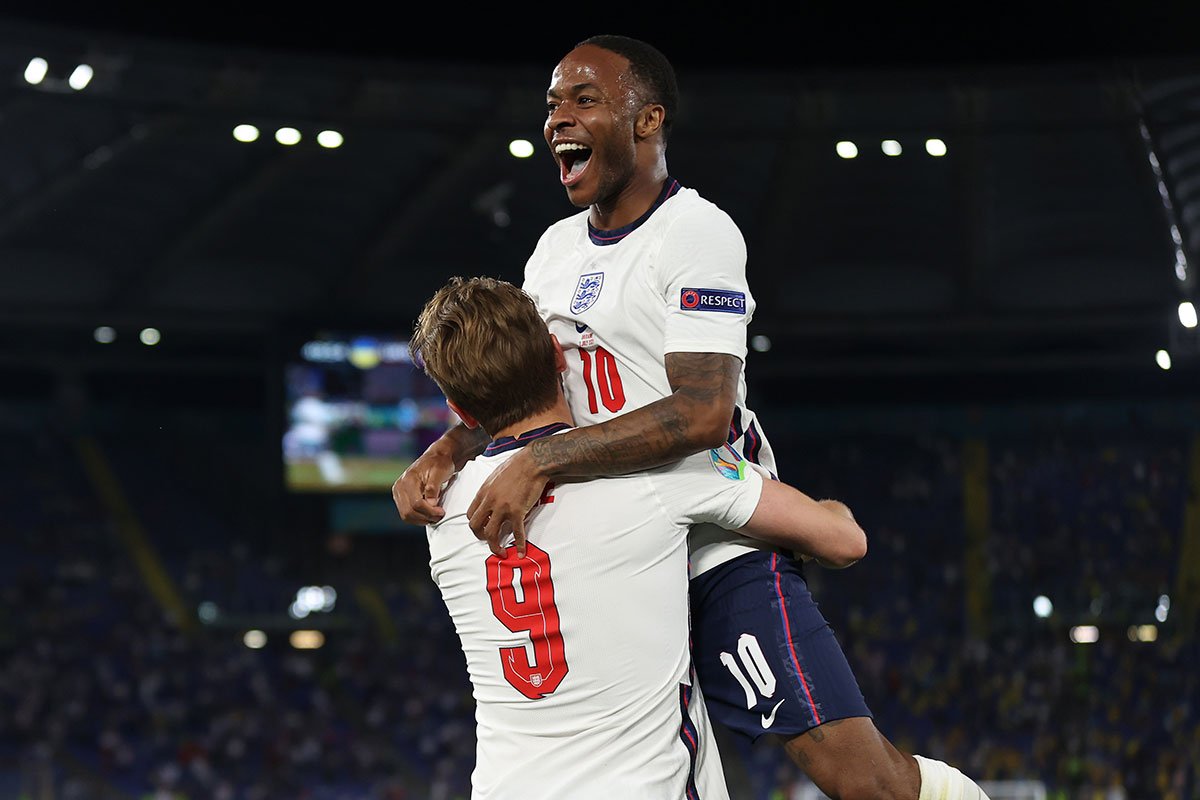
- Shot using a Canon EOS-1D X Mark III + EF 70-200mm f/2.8L IS III USM | 1/2,000s, f/2.8, ISO 2,000.
To improve, get out and practice. You’ll learn more from a day sitting in the rain shooting Sunday morning football than reading this article. It’s a simple equation: the more time you spend taking pictures; the more chance you’ll get a better picture. When you’ve got a good picture, be critical. How could it be better? Is the background messy? How’s the composition? Is the light better from a different angle? Should I try a different lens? You’ve probably got a memory card that can shoot 1,000 frames, so there’s no excuse for not shooting plenty.
My kit: I have 3 Canon EOS R3 bodies with Canon lenses; RF 16mm f/2.8 STM, RF 28-70mm f/2 L USM, RF 70-200mm f/2.8L IS USM and the RF 400mm f/2.8 L IS USM. I really enjoy working with mirrorless cameras now, the quality of image, outstanding autofocus that uses deep-learning artificial intelligence and excellent connectivity that allows me to get my pictures to the client on time. I also still have a Canon EOS-1D X Mark III which I now use as a remote camera behind the goal.
See all the latest Canon Cameras, Lenses & more.
About Eddie Keogh:
With 35 years of experience photographing every sport from Archery to Zinedine Zidane, Eddie counts himself lucky to have enjoyed a job that has taken him to the four corners of the globe and some great sporting events. Eddie is currently the official photographer for the England football team via Getty Images and shoots international rugby for England’s main sponsors O2. Eddie is also works with Canon as part of their Ambassadors Programme.
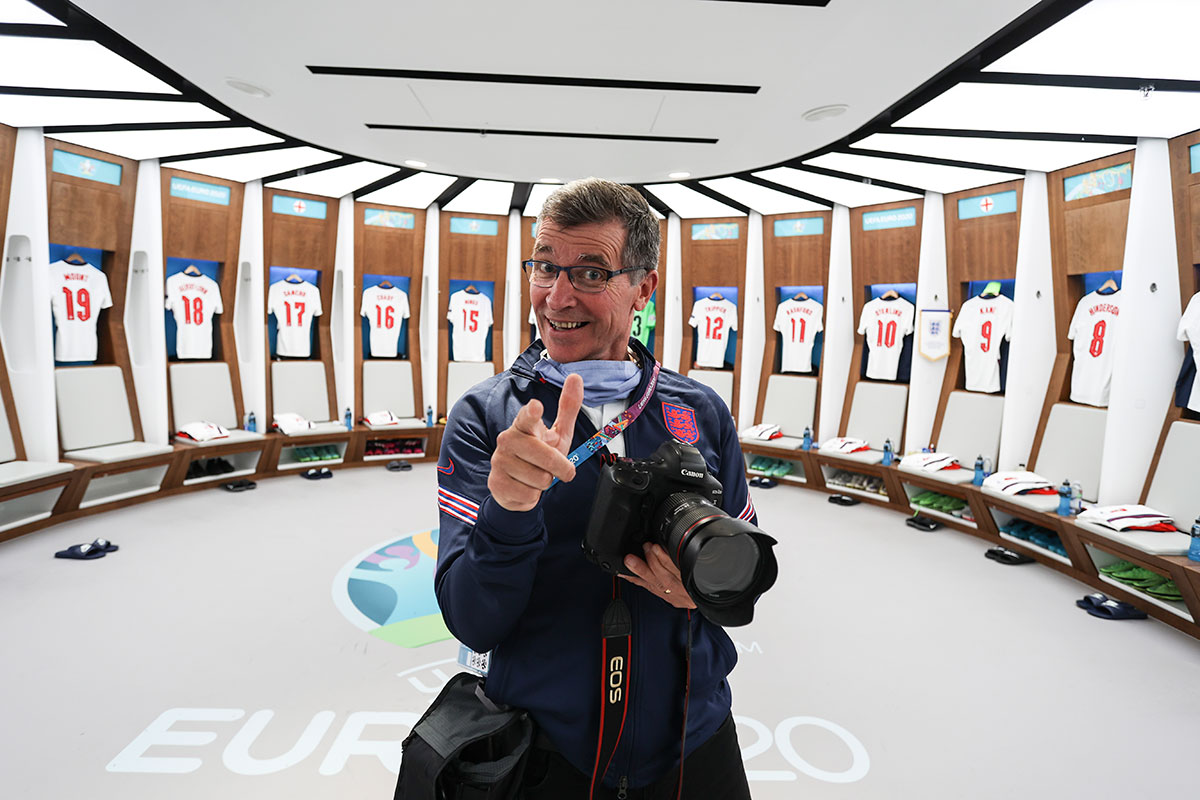
We hope you enjoyed this post. If you did, why not read some of our other articles:
Tips On How To Photograph Motion
Best Camera Equipment For Action And Racing
Share this post:
By Park Cameras on 30/10/2023

Trade in your old equipment
Fast and easy trade in service ensures your old gear is collected efficiently and you are paid quickly! It's very simple to trade in your unwanted photography gear. Just head over to our dedicated Sell or Part Exchange page, fill out the details, and we'll get back to you with an offer for your old gear. Take the cash, or put it towards the cost of your new gear. It's up to you! Find out more
sign up to the newsletter
Keep up to date on the latest photography news, events and offers. Sign up now
